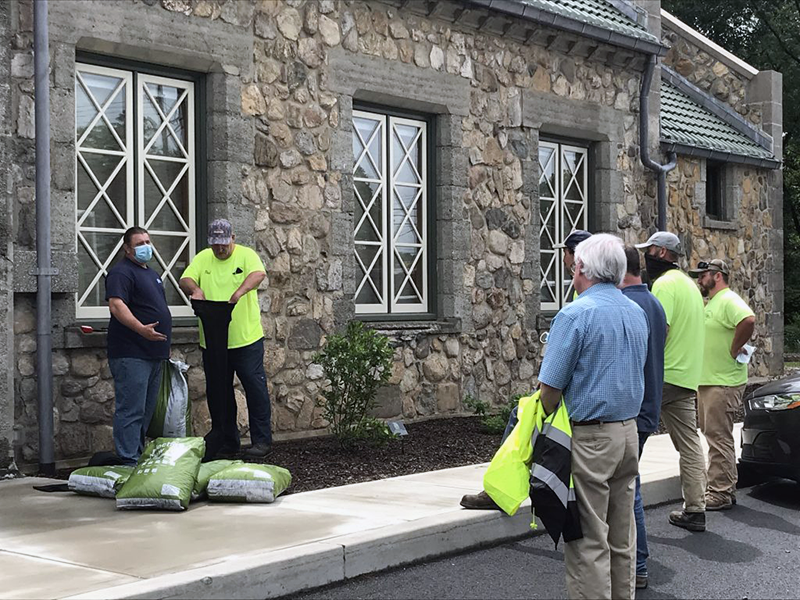
July 07, 2020| Environment
By: Lake Hopatcong Foundation/Lake Hopatcong Commission
Efforts to prevent harmful algal blooms (HABs) in Lake Hopatcong continued last week with the placing of several Biochar installations by Princeton Hydro at beaches and inlets around the lake.
This project is being implemented under the NJDEP HAB Grant awarded to the Lake Hopatcong Commission in partnership with the Lake Hopatcong Foundation and other project partners. The primary purpose of the projects initiated under the grant is to evaluate innovative technologies to control, prevent, or mitigate HABs on Lake Hopatcong.
 |
|
Biochar Training by Princeton Hydro for local DPW personnel. |
Biochar is a woody, organic material that attracts a variety of pollutants including phosphorus. Biochar was placed in large "socks" and tethered along beaches and inlet areas. This product has been shown to remove dissolved phosphorus directly from nearshore waters in turn limiting algal growth. The absorbed phosphorus is contained within the product and won’t leach back out. Biochar is a relatively low-cost option for phosphorus removal and has the added benefit of being usable as compost once its capacity to absorb phosphorus is exhausted.
According to Princeton Hydro, Biochar has been used for environmental health purposes for a while now, but recently, scientists are testing its ability to help control phosphorus levels in lakes, ultimately combatting the HAB issue.
Installations occurred last week at the Lake Winona Outlet and Lake Forest Yacht Club in Jefferson, Lakeside Ave and Holiday Ave (near Ingram Cove) in Hopatcong, and at the Edith Decker School outlet in Mount Arlington. Additional test installations are planned for Duck Pond in Roxbury, Memorial Pond in Mount Arlington, and in two stormwater treatment devices in Jefferson Township.